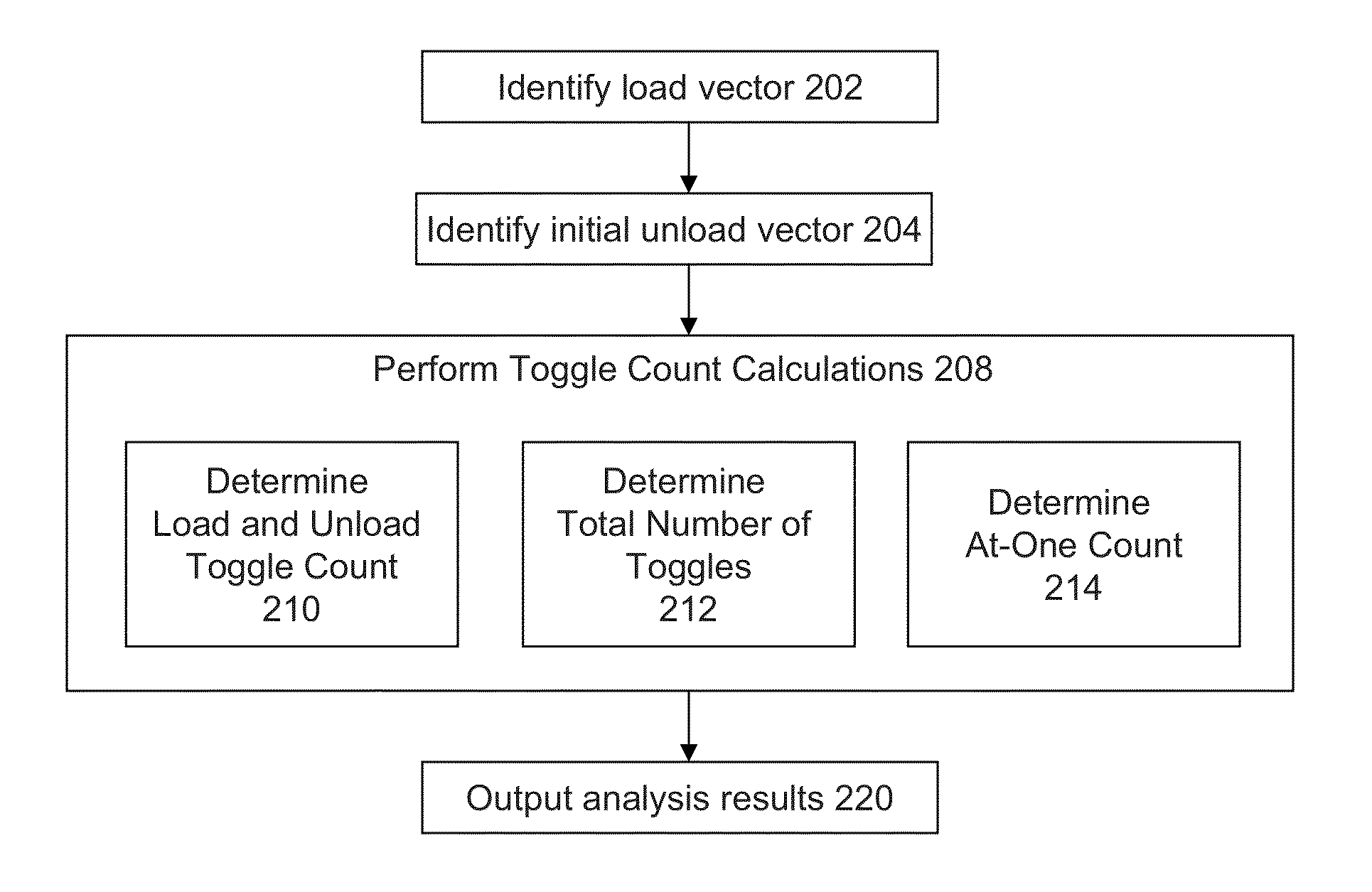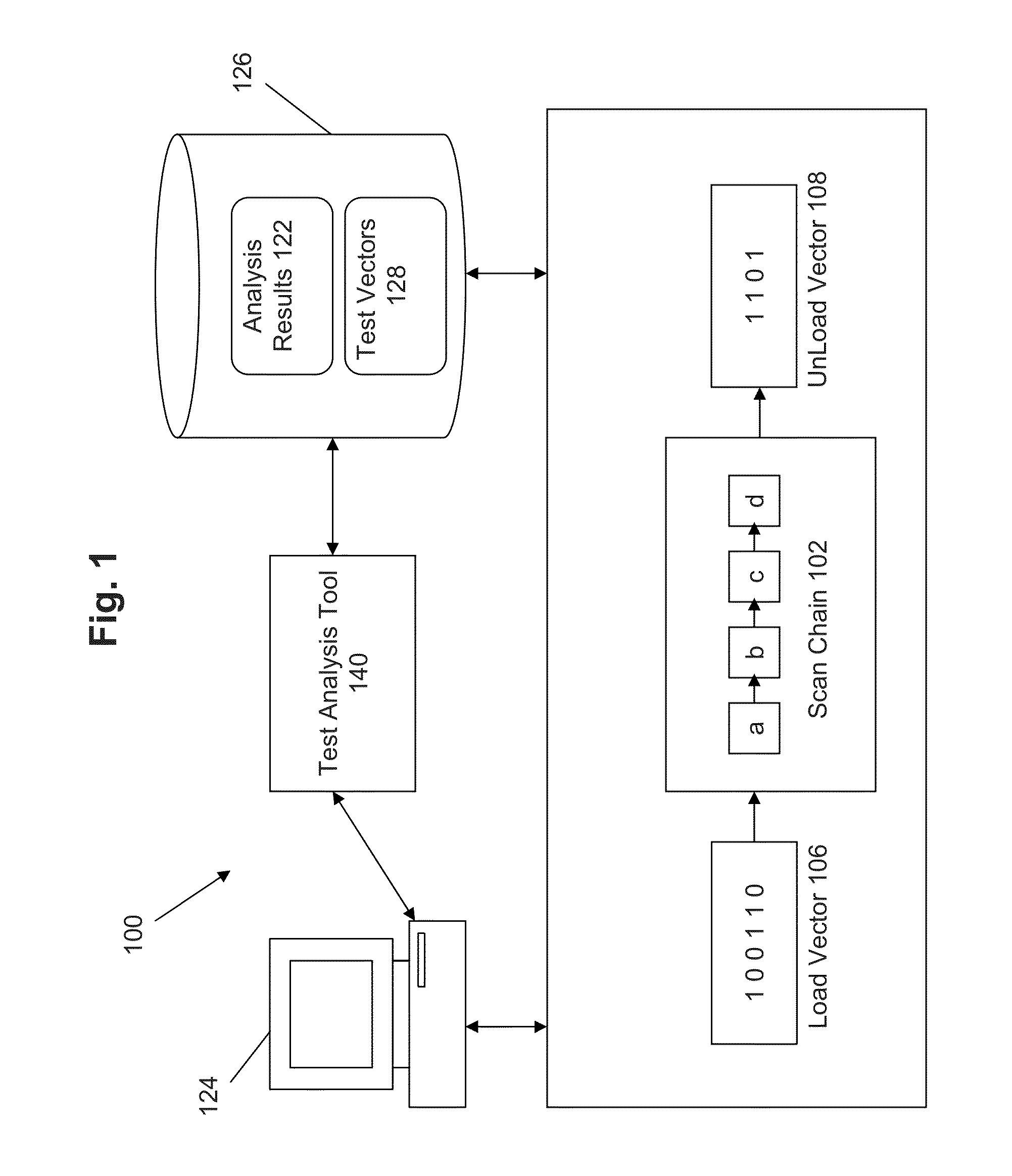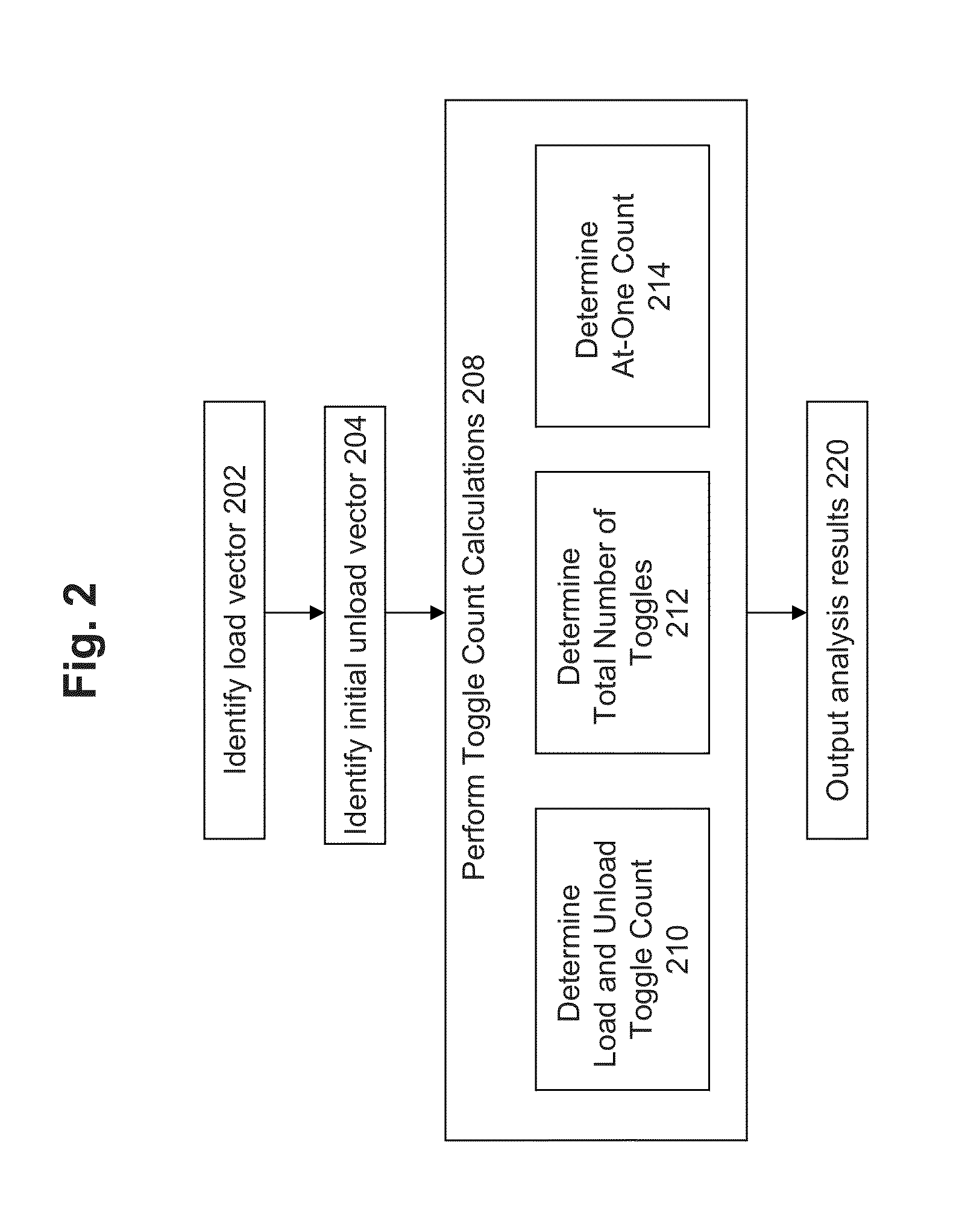Method and system for analyzing test vectors to determine toggle counts
a test vector and toggle count technology, applied in the field of electric design and testing, can solve the problems of false defects, higher peak test power, ir drops in the power-grid during execution, etc., and achieve the effect of discharging power on the ic, higher average test power, and higher peak test power
- Summary
- Abstract
- Description
- Claims
- Application Information
AI Technical Summary
Benefits of technology
Problems solved by technology
Method used
Image
Examples
Embodiment Construction
[0025]The present invention is directed to a system, method, and computer program product which provides an efficient and fast approach for analyzing test vectors to perform toggle analysis of tests.
[0026]FIG. 1 illustrates an example system 100 which may be employed in some embodiments of the invention for analyzing test vectors to calculate the switching activity for an electronic design or device. System 100 may include one or more users at one or more user stations 124 that operate the system 100. Such users include, for example, design, test, or verification engineers. User station 124 comprises any type of computing station that may be used to operate, interface with, or implement EDA applications or devices. Examples of such user stations 124 include for example, workstations, personal computers, or remote computing terminals. User station 124 comprises a display device, such as a display monitor, for displaying processing results 122 to users at the user station 124. User st...
PUM
 Login to View More
Login to View More Abstract
Description
Claims
Application Information
 Login to View More
Login to View More - R&D
- Intellectual Property
- Life Sciences
- Materials
- Tech Scout
- Unparalleled Data Quality
- Higher Quality Content
- 60% Fewer Hallucinations
Browse by: Latest US Patents, China's latest patents, Technical Efficacy Thesaurus, Application Domain, Technology Topic, Popular Technical Reports.
© 2025 PatSnap. All rights reserved.Legal|Privacy policy|Modern Slavery Act Transparency Statement|Sitemap|About US| Contact US: help@patsnap.com



